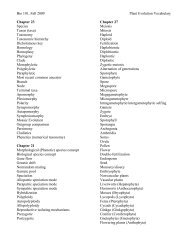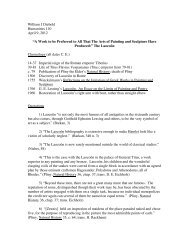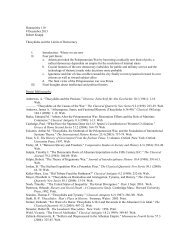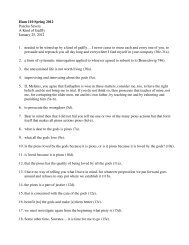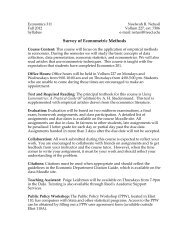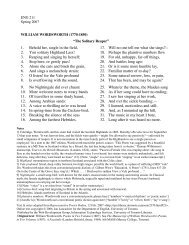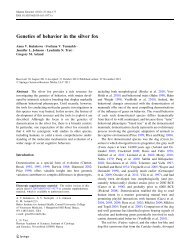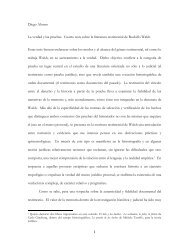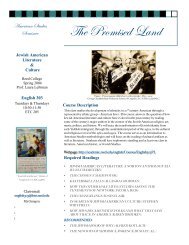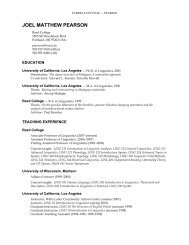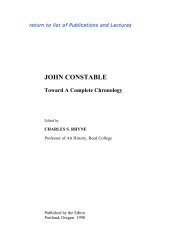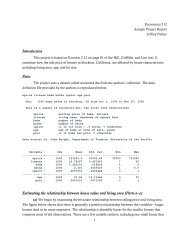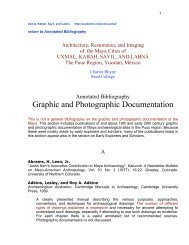REED COLLEGE SCIENCE OUTREACH PROPERTIES OF MATTER
REED COLLEGE SCIENCE OUTREACH PROPERTIES OF MATTER
REED COLLEGE SCIENCE OUTREACH PROPERTIES OF MATTER
You also want an ePaper? Increase the reach of your titles
YUMPU automatically turns print PDFs into web optimized ePapers that Google loves.
26<br />
Lesson Six- Exploring Solubility<br />
Objectives<br />
o Students will learn that different types of matter have different solubility.<br />
Lesson Background- Solubility<br />
Today students will learn about another chemical property of matter. Students will<br />
learn that different types of solids react differently when mixed with a liquid. Each type<br />
of matter has a different solubility, or ability to dissolve into a liquid. When a solid<br />
dissolves, all the molecules in a solid separate and are surrounded by the molecules of a<br />
liquid. The molecules of the liquid will then hold each of the solid molecules in a<br />
solution.<br />
All solids are able to dissolve into<br />
certain types of liquid. However, some<br />
types of matter will dissolve into water<br />
and others will only dissolve into other<br />
types of liquids like alcohol. This is<br />
because there are two types of<br />
molecules: polar and non-polar. Polar<br />
molecules act like a magnet. One side<br />
of the molecule has a slight negative<br />
charge and the other side has a slight<br />
positive charge. Just like a magnet,<br />
opposite poles of polar molecules<br />
attract. Water is a polar molecule, so<br />
when a polar molecule (such as sugar) is mixed into water, the water molecules’<br />
negative poles are attracted to sugar molecule’s possible poles (and viscera). As a result,<br />
water will only be attracted to (and dissolve) polar molecules. Similarly, non-polar<br />
liquids (such as alcohol), will only dissolve non-polar molecules (such as CO2).<br />
Activity overview- Paper Chromatography<br />
This week, students will work together to identify different types of ink by separating<br />
the ink’s molecules using paper chromatography. Ink is made up of a mix of different<br />
types of chemicals, each with different chemical properties. Some of the chemicals are<br />
water-soluble and others are only soluble in non-polar liquids such as alcohol. Paper<br />
chromatography uses a process called capillary action, to draw liquid up a piece of paper<br />
on which there is a sample of ink. As the liquid moves up the paper it will begin to<br />
dissolve some of the chemicals in the ink and move them up the paper. Smaller<br />
molecules will be drawn up the paper faster than larger chemical, so each type of ink<br />
will create its own unique pattern. In addition each type of ink will produce a different<br />
pattern when dissolved in water or alcohol, since not all chemicals can be dissolved by<br />
water/alcohol. Using this process, the students will separate the different chemicals<br />
using their unique chemical properties, and identify a mystery ink by its unique pattern.



